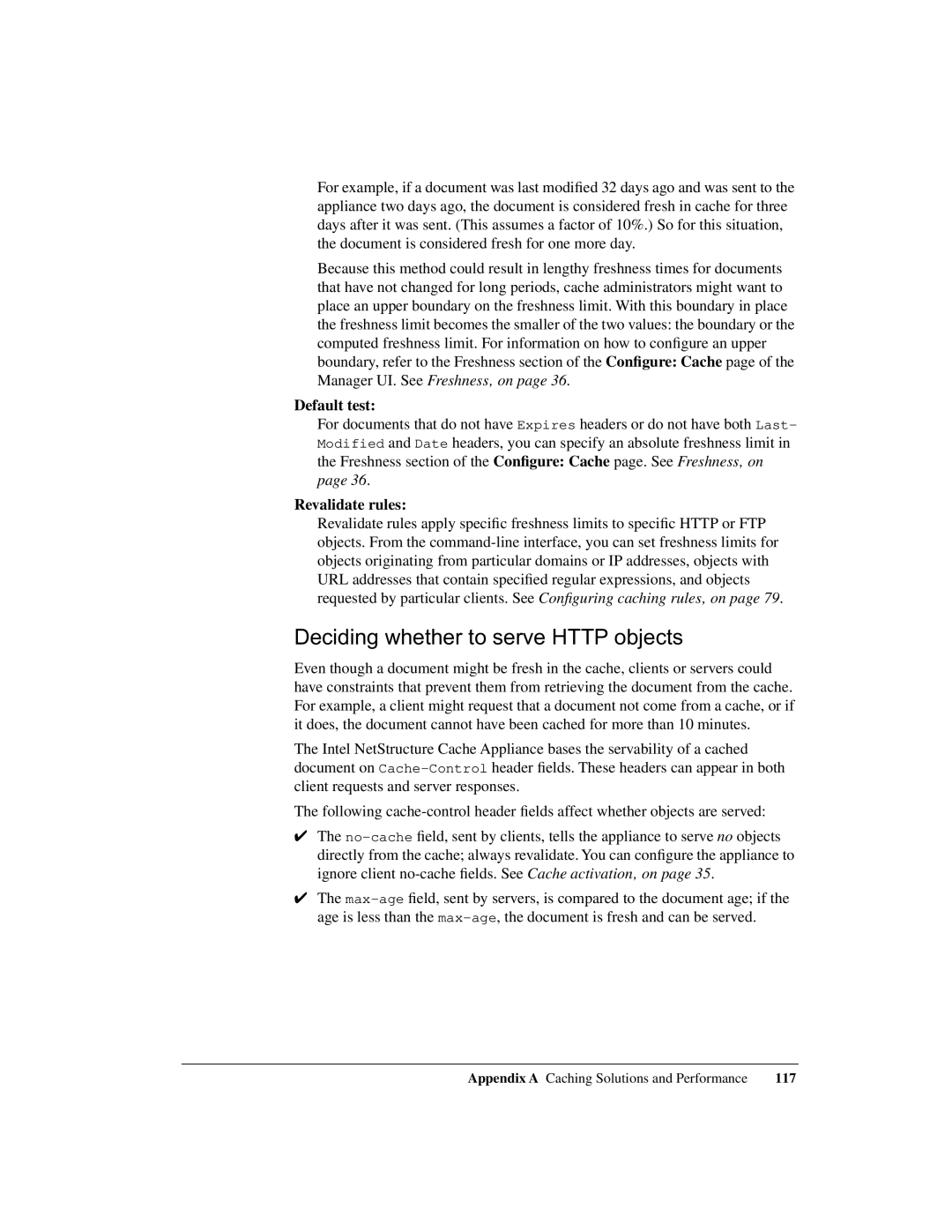For example, if a document was last modified 32 days ago and was sent to the appliance two days ago, the document is considered fresh in cache for three days after it was sent. (This assumes a factor of 10%.) So for this situation, the document is considered fresh for one more day.
Because this method could result in lengthy freshness times for documents that have not changed for long periods, cache administrators might want to place an upper boundary on the freshness limit. With this boundary in place the freshness limit becomes the smaller of the two values: the boundary or the computed freshness limit. For information on how to configure an upper boundary, refer to the Freshness section of the Configure: Cache page of the Manager UI. See Freshness‚ on page 36.
Default test:
For documents that do not have Expires headers or do not have both Last- Modified and Date headers, you can specify an absolute freshness limit in the Freshness section of the Configure: Cache page. See Freshness‚ on page 36.
Revalidate rules:
Revalidate rules apply specific freshness limits to specific HTTP or FTP objects. From the
Deciding whether to serve HTTP objects
Even though a document might be fresh in the cache, clients or servers could have constraints that prevent them from retrieving the document from the cache. For example, a client might request that a document not come from a cache, or if it does, the document cannot have been cached for more than 10 minutes.
The Intel NetStructure Cache Appliance bases the servability of a cached document on
The following
✔The
✔The
Appendix A Caching Solutions and Performance | 117 |
